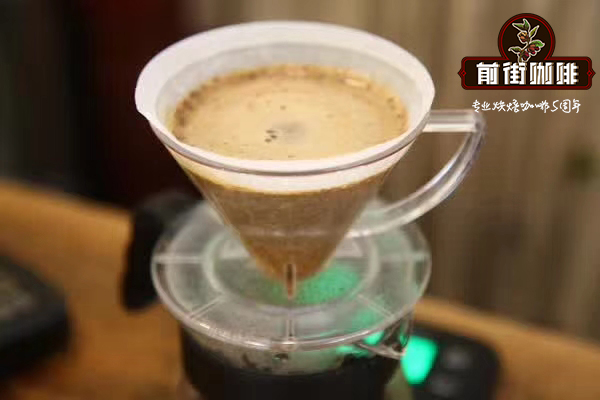Coffee brewing method introduces how to make chemex coffee elegant hand brew

Professional coffee knowledge exchange more coffee bean information please follow the coffee workshop (Wechat official account cafe_style)
Sunshine of chemex coffee machine
No matter what kind of wine you use (there are many choices), the general process is the same for most brewers. Pour hot water on the ground coffee beans.
Of course, it's a little more complicated than that, but not much. Although you should follow the process recommended by the manufacturer for your brewer, here is the basic approach.
Step 1: heat water
Like most extraction methods, you want the water poured out to be hot, but not too hot. The optimal temperature is usually between 195 and 205 degrees Fahrenheit. A kettle with a thermometer works best, but if you don't have a thermometer, wait about 30 seconds after the water boils.
Step 2: place and flush the filter
Most wine pouring systems use filter paper because it makes the beer cleaner. But they can also make your coffee a little bit of paper. So, if you use a paper filter, you should wet it first and then dispose of the water used to flush the filter.
If you prefer reusable filters, you can skip this cleaning. However, this is also a good way to preheat coffee cups, so I suggest rinsing them quickly either way.
Step 3: place the eyedropper
Depending on your settings, you may be extracting coffee cups from the manufacturer or just your favorite coffee cups. In either case, you need to put the eyedropper on the container so that you can pour all the liquid on the container.
Step 4: grind (weigh) coffee
Weigh the coffee on the scale
For general wine pouring, I suggest starting with medium to medium grinding. Your land should be similar to sea salt. Because you are looking for the greatest flavor, you want to grind before you extract, and the setting that falls on it is ideal.
How much you grind depends on your needs and the ratio of water to coffee you like. In general, the 16:1 ratio is a good start, but light roasting might be better, with less coffee. If you want to make a cup of coffee, you can start with a liter of water and 60 grams of coffee. Adjust to a smaller size, such as a cup.
Step 5: add coffee to the filter
Chemex's coffee grounds.
After you pour your coffee into the filter, make sure you have a neat bed. You can tap the filter paper or flatten it with a spoon (don't squeeze the filter paper). This step is important because you even want to extract, a horizontal bed helps make sure the water hits all the coffee.
If you make wine on the scale (you should get the best results), you can put your settings on the scale and return it to zero. This will help you know exactly how much water you have added. As long as you remember how much coffee you drink, you will get the right proportion.
Step 6: spend the ground
Use coffee powder in chemex coffee machine
You can finally start pouring coffee, but don't just pour the kettle into the coffee. This will make your coffee unsatisfactory or just a mess.
First, you need to start your timer to "blossom" the ground. Start from the center of the coffee bed and pour it out in a circular motion, spirally to the edge of the filter paper.
Your goal is to make the field saturated. If the coffee starts to flow out of the filter, stop. You added too much water.
Step 7: wait!
Yes, I know it's hard. Hot water rushes on your fresh coffee grounds and begins to release all the fragrance to keep you refreshed in the morning. But you have to wait 30-45 seconds for the ground to blossom.
This step ensures that the coffee is evenly saturated, giving it time to remove gas, and the carbon dioxide released will have a negative impact on the taste of the coffee. In addition, it's cool to watch the ground "expand" from the release of gas, which is exactly like a blooming flower (that's where the word bloom comes from).
Step 8: Pour water slowly
Pour water into chemex
After that painful 30 seconds, start pouring. Although the technology varies, the general advice is slow and steady.
Using a circular motion, you can pour a small stream of water over all the fields. The process takes about three minutes and may be staged, then water is allowed to flow through the coffee and soon you'll be tasting all the flavors.
END
Important Notice :
前街咖啡 FrontStreet Coffee has moved to new addredd:
FrontStreet Coffee Address: 315,Donghua East Road,GuangZhou
Tel:020 38364473
- Prev

What are the principles and rules of coffee extraction? how to make coffee is correct.
Professional coffee knowledge exchange more coffee bean information Please pay attention to the coffee workshop (Wechat official account cafe_style) in the process of making coffee, the extraction is to extract the particles from the coffee grounds into the water. In order to understand this process, we need to review high school chemistry (sorry!) When you make coffee, you are creating a solution. Particles in coffee grounds or solutes are soluble in water, that is,
- Next

V60 filter cup how to use v60 filter cup brewed coffee good drink why hand brewed coffee with V60
Professional coffee knowledge exchange More coffee bean information Please pay attention to coffee workshop (Weixin Official Accounts cafe_style) Hario V60 hario v60 coffee machine V60 is very suitable for diversity. You can get this cone shower in a variety of sizes, colors and materials. Grind:V60 spirals and large, single openings allow for increased water flow, so a fine to medium grind should
Related
- Beginners will see the "Coffee pull flower" guide!
- What is the difference between ice blog purified milk and ordinary milk coffee?
- Why is the Philippines the largest producer of crops in Liberia?
- For coffee extraction, should the fine powder be retained?
- How does extracted espresso fill pressed powder? How much strength does it take to press the powder?
- How to make jasmine cold extract coffee? Is the jasmine + latte good?
- Will this little toy really make the coffee taste better? How does Lily Drip affect coffee extraction?
- Will the action of slapping the filter cup also affect coffee extraction?
- What's the difference between powder-to-water ratio and powder-to-liquid ratio?
- What is the Ethiopian local species? What does it have to do with Heirloom native species?

